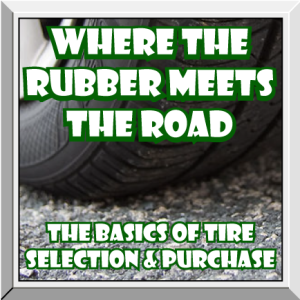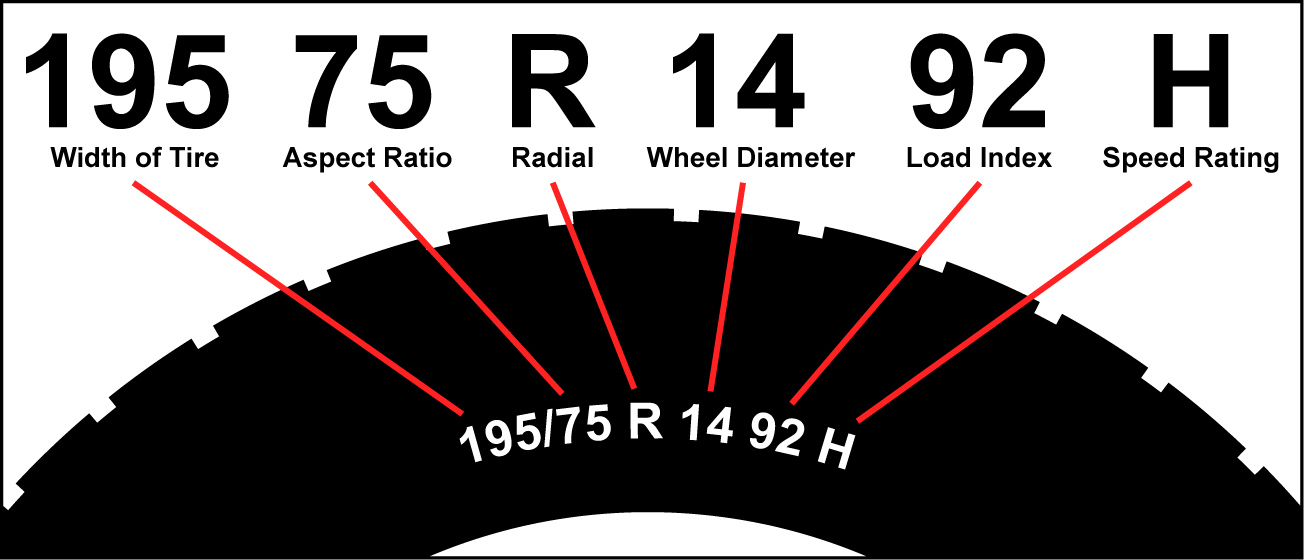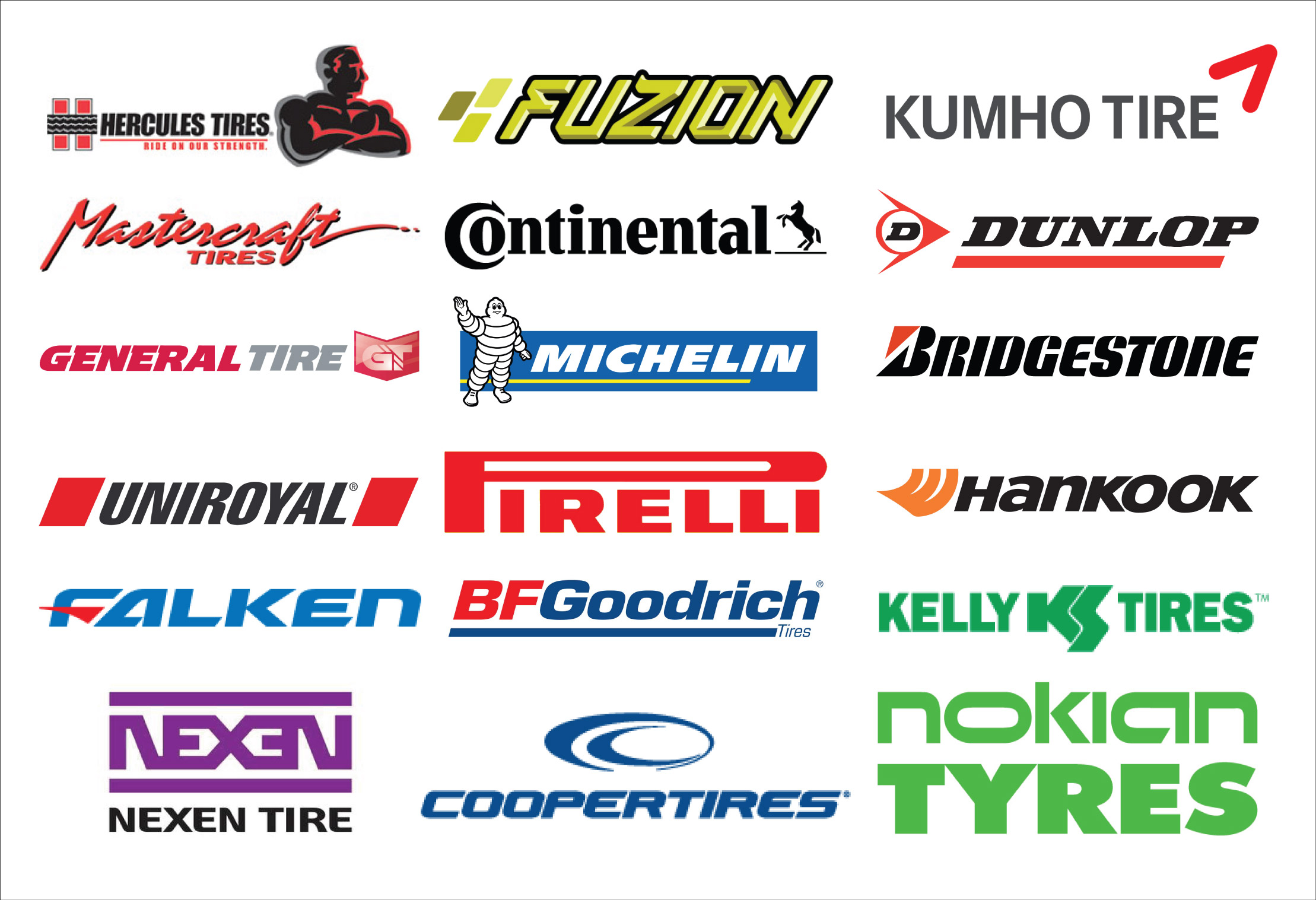
 Did you know we sell tires? We do, and we have for many years. Among the many other features of our shop, we’re an “America’s Tire” dealer, so from Avon and Bridgestone to Uniroyal and Zenna, we have a full range of brands and sizes and we can order any specialty tires you need as well. Best of all, our tires come with the same Tom Dwyer quality and service you expect (service like rotating your tires from other shops at no charge on request). In fact, let us give you a small taste of that service right now… when you go tire shopping, you’ll find each tire has a long string of letters and numbers describing its exact size and function. Here’s how to understand those numbers, with advice on how to make them work for you…
Did you know we sell tires? We do, and we have for many years. Among the many other features of our shop, we’re an “America’s Tire” dealer, so from Avon and Bridgestone to Uniroyal and Zenna, we have a full range of brands and sizes and we can order any specialty tires you need as well. Best of all, our tires come with the same Tom Dwyer quality and service you expect (service like rotating your tires from other shops at no charge on request). In fact, let us give you a small taste of that service right now… when you go tire shopping, you’ll find each tire has a long string of letters and numbers describing its exact size and function. Here’s how to understand those numbers, with advice on how to make them work for you…
Knowing the basics
There are many things to consider when choosing new tires for your vehicle. Not only must tires fit rims and wheel wells that vary dramatically, but tires are designed with different features for different loads, conditions, and applications. Most vehicles can be safely fitted with a number of tires of different sizes, and all cars have tire information stickers giving acceptable stock and optional sizes for the vehicle as well as proper air pressure settings. You can find these stickers on the driver’s side door post (or in the glove box) or in your Owner’s Manual. No matter their end use, all tires must conform to Federal Safety Requirements which have been standardized for all manufacturers. The variables in tire sizes and functions are required to be cast into the sidewall of all tires, resulting in the long strings of letters and numbers that make up a tire’s “size”. These variables include:
All-season rating Speed rating Temperature rating Size Treadwear rating Traction rating Manufacturer mileage warranty Name brand
All these variables should factor into your choice of a new tire, but some can be more important to you than others. Here is a description of each of these variables and what they mean…
All-Season rating
Tires that are All Season rated are marked with the M/S (mud and snow) designation on the tire sidewall. M/S tires are specially designed for traction in wet or slippery conditions. Special tread patterns and rubber compounds are used that maintain pliability in cold weather and minimize the tradeoff between winter grip and dry wear.
Speed rating
All tires are assigned a speed rating, designating the tires’ ability to shed heat built up during high-speed operation. Speed ratings are ranked by the maximum safe operating speeds:
SR= 105 mph; HR= 115 mph; TR= 125 mph; VR= 150 mph; ZR= 180 mph
In most cases the lowest speed rating is acceptable… after all, how often do you drive over 100 mph for a full hour? Even if you were to run an SR rated tire at speeds over 100 mph for a sustained period the tire would probably fail.
Manufacturer mileage warranty
Manufacturers’ mileage warranties can be tricky. The rating is subjective and may not accurately reflect the service the tire will deliver. The warranty is for material defect only, and does not cover wear from improper inflation or alignment problems. We recommend using the treadwear rating rather than the manufacturer’s warranty to determine the life of a tire.
Temperature
The temperature grades are A (the highest), B, and C, representing the tire’s resistance to the generation of heat and its ability to dissipate heat under controlled test conditions. The Speed rating and the Temperature rating are related.
Treadwear
As a guideline, the larger the treadwear number is the longer the tire will last. Treadwear grade is a comparative rating based on the wear rate of the tire when tested under controlled conditions on a specified government test course. For example, a tire graded 150 should wear one and a half (1.5) times as long as a tire graded 100, but real-world results will vary. A rough interpolation of the numbering system would be:
Under 200= less than 30,000 miles 260= about 30,000 miles
320= about 40,000 miles 360= about 50,000 miles
400= over 60,000 miles Over 500= about 80,000 miles
Traction
The traction grades from highest to lowest are AA, A, B, and C. This rating represents the tire’s ability to stop on wet pavement as measured under controlled conditions. Stay with the upper grades for traction, because a tire with C traction may have poor traction performance.
Size
While there is room for choice in many tire features, you should never deviate from the recommended tire size for your vehicle. All cars have tire information stickers giving acceptable stock and optional sizes for the vehicle as well as proper air pressure settings. You can find these stickers on the driver’s side door post (or in the glove box) or in your Owner’s Manual. Never mix tire sizes on a vehicle.
Learning by Example
 The best way to explain tire size is by example, so let’s look at a common tire size of 195/75 R 14.
The best way to explain tire size is by example, so let’s look at a common tire size of 195/75 R 14.
The “195” is the width of the tire at its widest point that is, at the “bulge”, not at the tread. This measurement is in millimeters.
The “75” is the aspect ratio, or the ratio of the width to the height of a tire expressed as a percentage. It’s the distance of the bead of the tire (the part of the tire that matches against the rim) to the ground, divided by the width of the tire at the widest point (195 mm in this example). Our example aspect ratio is 75, or 75%, so this tire would be 75% as tall as it is wide. As tires get wider they get taller within the same aspect ratio.
The “R” means this would be a radial tire. Sometimes you’ll see “P” or “LT” before all these numbers, which indicates that the tire is designed either for a passenger car or a light truck, respectively.
The “14” is the mounting diameter. It’s the size of the center hole of the tire, or alternatively, the rim size you’ll need for a given tire. Since you know the tire width is in millimeters, can you guess what unit of measure is used for the mounting diameter? Wrong! Mounting diameter is expressed in inches!
Name Brand
 Brand familiarity can matter when comes to tires. The quality can be reasonably assured, and it is much easier to warranty a national brand tire like a Michelin, Dunlop, Cooper, Goodyear, Firestone etc. than a Solar, Vixen, Jupiter, Pneumant, or other local or off-brand tires. It’s usually best to stick with a well-known, national brand.
Brand familiarity can matter when comes to tires. The quality can be reasonably assured, and it is much easier to warranty a national brand tire like a Michelin, Dunlop, Cooper, Goodyear, Firestone etc. than a Solar, Vixen, Jupiter, Pneumant, or other local or off-brand tires. It’s usually best to stick with a well-known, national brand.
Making the basics work for you
The “No-Brainers”
Knowing what those complicated letters and numbers mean is one thing, but making the knowledge useful is another. When it gets right down to it, though, some of these variables really have no-brainer choices…
- Always buy tires in sets of at least two, and sets of 4 if you can afford it. Buying one new tire can create driveability issues when mixed with other tires of varying wear, and some vehicles require tires to be replaced all at the same time.
- Please don’t buy recap tires! We see no value in them when for a few dollars more you can have a real tire. The savings don’t justify the risks involved.
- If you live in the Northwest you should almost certainly use “All-Season” rated tires.
- Unless you drive like a maniac, Speed Rating should not be an issue. For the vast majority of people SR rated tires are fine. Some tire sizes require a particular Speed Rating; for example, most low profile tires will come with HR or higher Speed Rating.
- Manufacturers can make whatever claim they want for a mileage warranty, so don’t overly rely on their rating. Use the Treadwear number for the best idea of tire longevity.
The “Choices”
Beyond the above “givens” there’s more leeway for choice. As general advice, though, we recommend that you stay within these guidelines…
- Never buy a tire with ratings less than a “200” Treadwear rating or lower than a “B” Temperature rating. Ratings lower than these indicate poor quality, and tires are not an area to economize. It’s amazing how much more quality can be purchased for a few extra dollars per tire. Ideally we recommend tires with ratings like:
Touring Tire- Treadwear- 360-540, Traction– A, Temperature- B-A
Performance Tire- Treadwear- 200-360, Traction- AA-A, Temperature- A
Cost per mile
A neat trick to compare relative value between tires is to approach it like unit pricing at the grocery store. Divide the cost of any tire by the Treadwear number to get the cost per mile. The higher the number, the more expensive the tire. You can compare tires’ value by this method even when the tires are of very different quality or cost.
As an example, let’s say you have a choice between a 320AA tire for $50 or a 540AA tire for $75. Which one would you pick? All other things being equal, the best tire is the one that gives you the most miles per dollar.
$50.00 (cost) divided by 320 (treadwear) = .16 cents per mile
$75.00 (cost) divided by 540 (treadwear) = .14 cents per mile
The 540AA costs less per mile and would be the better buy provided you need longer lasting tires, care for the tires, and keep them rotated and aired up properly.
Get COMPLETE information
Tires and their costs are just part of the tire-buying decision. When shopping for tires make sure to ask these basic questions about the tire AND the service that goes with them:
- How much is the tire(s) itself?
- Does that price include mounting and balancing?
- Does that price include an alignment? If not, how much is an alignment?
- Do you rotate and balance your tires for free?
- Do you repair your tires for free?
- Can I purchase road hazard insurance for your tires?
- If I need additional services, how long will it take to have these services performed?
Taking care of your tires
Once your baby has its new pair of shoes, you’ll want to get the maximum life out of them. These are good basic guidelines no matter what type of tire you buy…
- Make sure to have the alignment checked and/or corrected whenever you buy new tires.
- Keep tire air pressure set to manufacturers’ specification (usually 26-32 psi)
- Rotate, balance and inspect tires every 6,000 miles.
- Don’t drive on a low or flat tire.
- If the steering wheel is off-center or the car pulls to one side, have it checked ASAP.
- If you hit a curb, huge pothole, or other object have it checked ASAP.
Digging Deeper
This article represents just some of the most basic information you need to know to make good tire buying decisions, but tires and tire technology go far beyond what we’ve shared with you here. If you want to know more about tires, here are several other sources you may find useful…
The Insane Research And Technology Behind Tires That Keeps You Safe, Mate Petrany on Jalopnik, Mar 2014
Studded Tires, Tom Dwyer Automotive Services, Jul 2010
When Should I Replace My Tires? Tom Dwyer Automotive Services, Nov 2010
Why are tires black? Tom Dwyer Automotive Services, Jan 2011
Will Polyurethane Replace Rubber for Tires? Tom Dwyer Automotive Services, Jan 2011
How to keep track of tire wear, Tom Dwyer Automotive Services, Jan 2011










